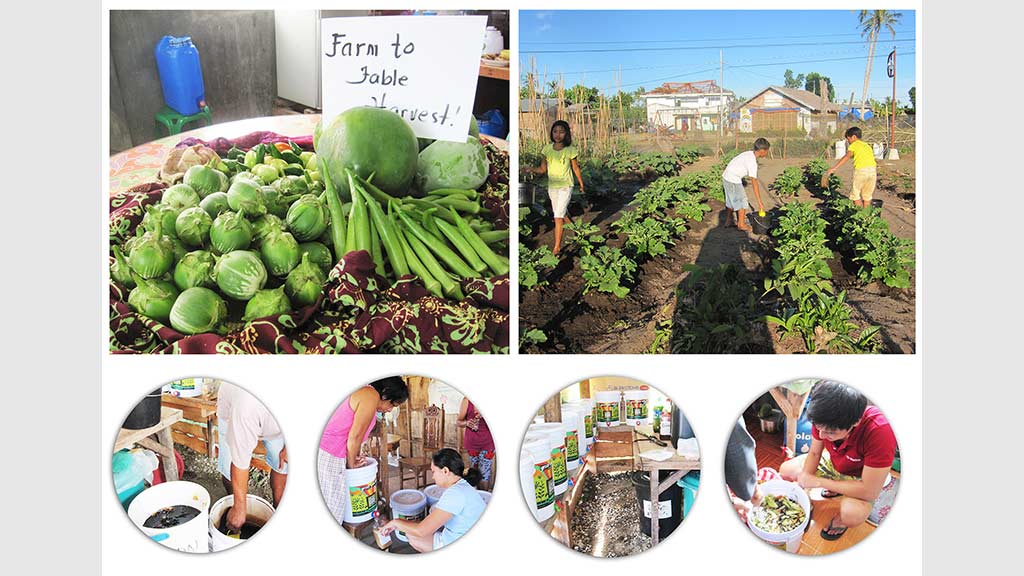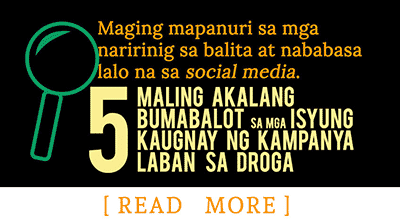Sounds like Japanese? It actually is.
Fermented organic matter or Bokashi is a popular bio-fertilizer in Japan, using from-plate-to-farm concept.
A community in the island of Leyte use food leftovers from the kitchen as garden fertilizer, through this natural process. They have been producing organic vegetables for their daily consumption, and even for the local market.
For this month’s Sapat Dapat winner, we are pleased to present a community in Tanauan, Leyte: barangay Magay.
Rebuilding back better with scraps
Barangay Magay has been using this technology for almost 2 years. In such a short time, they have already a list of success stories because of this practice.
Bokashi is the new “kitchen scrap disposal system” for the memberes of Magay community. They collect food leftovers, such as peelings, expired food, and the likes, and process these using their Bokashi kits, in order to raise healthy organic vegetables in their communal garden.
Bokashi is often referred to as a type of ‘composting,’ but it is actually an anaerobic fermentation process, resulting in a much different end product than that produced via composting.
Nothing is wasted. The solid parts become organic soil fertilizers, while the liquid part, called the Bokashi juice, is used as foliar fertilizers (sprayed on the plants leaves).
This initiative aims to build the capacity of the survivors of Typhoon Yolanda in Tanauan, while providing them with sustainable livelihood that is eco-friendly.
After the devastation brought by the super typhoon, the Augustinian Sisters of Our Lady of Consolation assisted rebuilding the community through its relief and rehab projects in partnership with other organizations. The Bokashi Project is a fruit of their projects’ phase transition, from rehabilitation towards recovery, capacity-building and preparedness of the community by providing them with sustainable livelihood.
“We started this project in December 2013,” said Sr. Zaida Villareal, an Augustinian nun. “We actually started from scratch, from scraps: what mostly were left after the whole island was ravaged by the storm.”
She added that Bokashi can be done in small all large scale, but the product is very useful.
“Unlike composting, this can even be done by urban dwellers as it does not produce odour,” Sr. Villareal added. “Aside from that, you get to re-use your food scraps, instead of throwing them somewhere else.”
Bokashi 101: What is it exactly?
Bokashi HQ defines Bokashi practice as a composting method of quickly breaking down organic wastes. Unlike conventional composting, Bokashi makes use of Effective Microorganisms (EM) that are added to the organic waste stored in a Bokashi bin. It is more of a fermentation process than a conventional composting process.
Air is not required for the organic matter to ferment. Because of this, the process is odour free and makes for a perfect kitchen compost bin.
The system can be completely sealed, which removes any worries about insects or animals making a nuisance of themselves. It was introduced by Dr. Teuro Higa, a professor from University of Ryukyus, Okinawa, Japan, around 1982.
Living with Bokashi, living healthy
Two years after, the community is not only living healthy. Bokashi practitioners are also taking care of the environment, without the use of harmful chemical for their gardens and farms. Alongside the practice of s, the community also promotes proper waste segregation. Because of this, recylcing is easy.
The leaders of barangay Magay are also selling Bokashi kits and implements. They also provide educational session for people and other communities who want to learn the practice.
To know more about the practice, visit the website of the Augustinian Sisters of Our Lady of Consolation.

